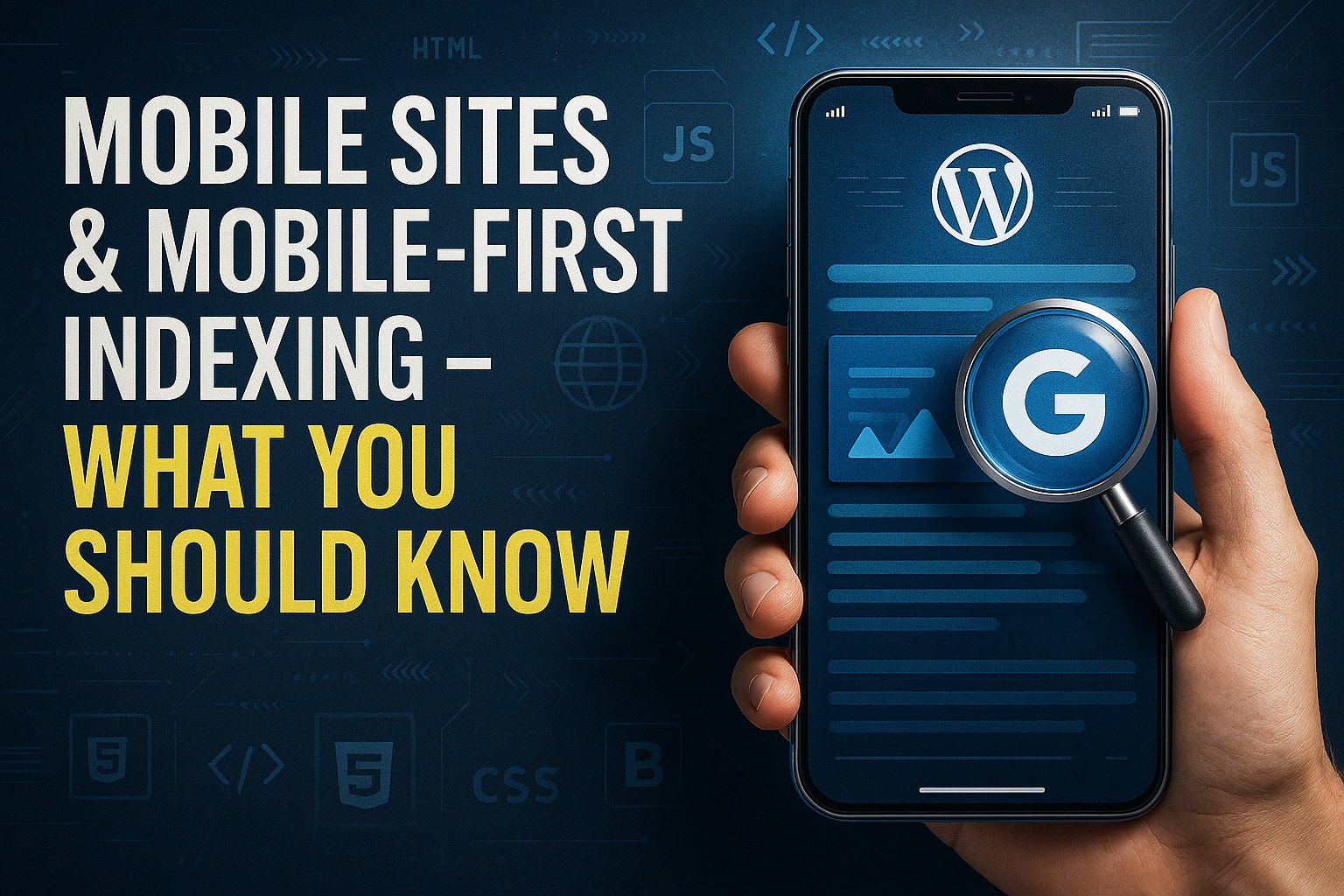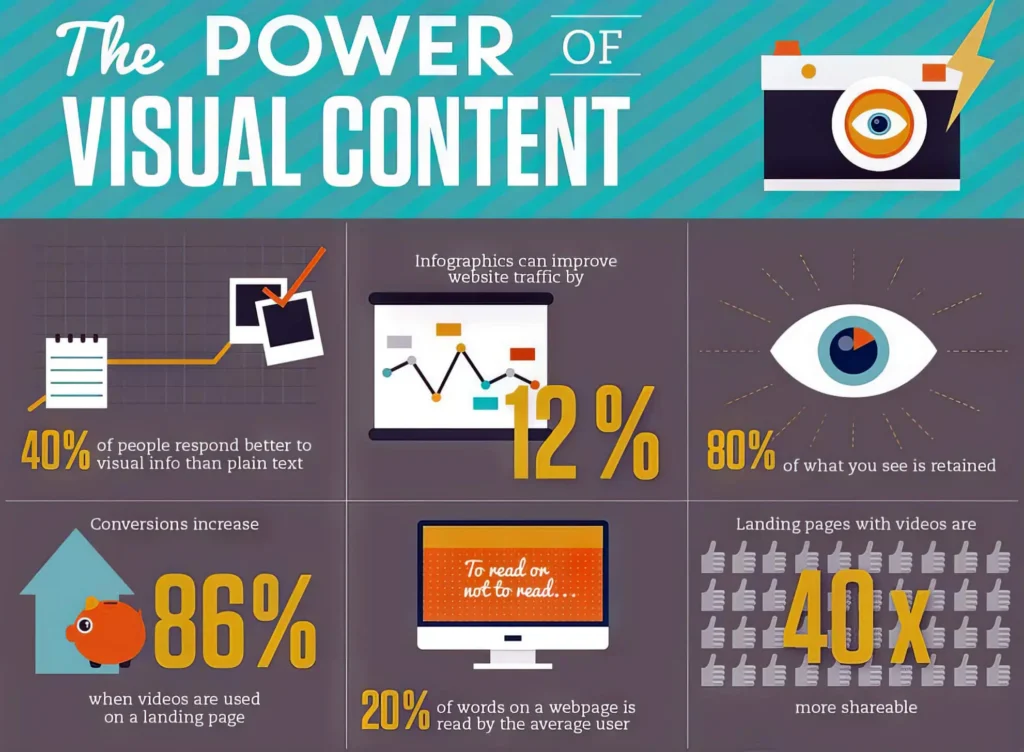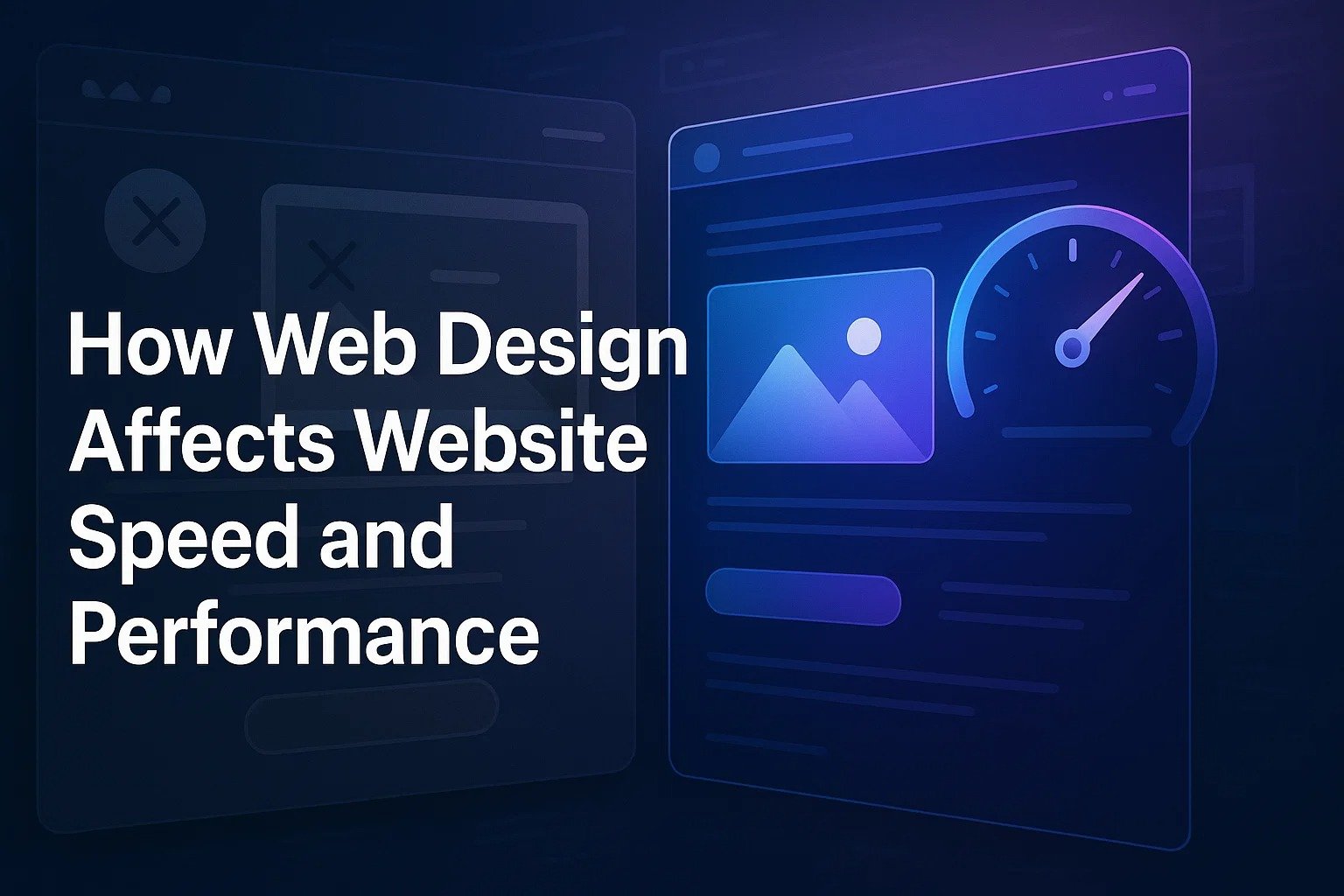Mobile Sites & Mobile-First Indexing – What You Should Know

Google mostly looks at your site’s mobile version when deciding how to rank and index it. This is what they call mobile-first indexing. In simple terms: if your site doesn’t work well on a phone, it might not show up where you want it to in search results.
Now, technically, you don’t have to have a mobile version to be included in search. But in reality? You probably should. Most people browse on their phones these days, and Google is all about giving users the best experience possible.
So, whether you’re designing a site from scratch or cleaning up an existing one, there are some best practices worth following to make sure your mobile site is solid—not just for Google, but for your visitors too.
Make Your Site Mobile-Friendly

If your website still isn’t mobile-friendly, now’s the time to fix that. More people browse the web on their phones than ever before, and if your site isn’t easy to use on a small screen, you’re probably losing visitors (and Google won’t be too happy either).
There are three main ways to build a mobile-friendly site. Each works a little differently:
Responsive Design
This is the most straightforward option, and it’s what Google recommends. Basically, your site uses the same URL and the same code, but it adjusts the layout depending on the screen size. One site, all devices. It’s simple, clean, and easy to manage.
Dynamic Serving
With this setup, your site still uses the same URL, but it shows different code depending on the device someone’s using. So, a desktop user might see one version, and a phone user might see another. It relies on something called user-agent detection and uses the Vary: User-Agent header to make that work.
Separate URLs
This method gives mobile users and desktop users completely different pages—each with its own URL. You’ve probably seen this before with sites that use something like m.website.com for mobile. It works, but managing two versions of your site can get messy.
Quick Note: The rest of this guide is mainly for dynamic serving and separate URL setups. If your site uses responsive design (which is usually the best option), the content and metadata are already the same across devices—so you’re in good shape.
Let Google Access and Render Your Mobile Content
If you want your pages to show up properly in search results, you’ve got to make sure Google can actually access and understand your mobile content. Here are a few things to watch out for:
Use the Same Robots Meta Tags on Both Versions
Don’t set different robots meta tags for mobile and desktop. If your mobile pages use something like noindex or nofollow when your site is using mobile-first indexing, Google might skip over them completely. That’s an easy way to kill your rankings without realizing it.
Avoid Lazy-Loading Main Content with User Actions
If important content only shows up after someone taps, swipes, or clicks, Google might not see it. Stick to lazy-loading methods that don’t depend on user interaction, especially for key parts of your page.
Don’t Block Important Resources
Sometimes mobile pages use different URLs for things like images, scripts, or styles. If those resources are blocked in your robots.txt file, Google won’t be able to render the page correctly. Make sure you’re not unintentionally hiding anything your mobile site needs to load properly.
Keep Your Content Consistent on Mobile and Desktop
With Google using the mobile version of your site for indexing, it’s more important than ever to make sure the content on your mobile site matches what’s on your desktop version. Even if the layout is different, the actual content needs to be the same so both versions can rank for the same keywords.
Here’s what to keep in mind:
Don’t Cut Corners on Mobile
Sometimes mobile versions get stripped down to the basics, but that can backfire. If your desktop site includes important text, images, or product details, your mobile site should show all of that too. Otherwise, you’re giving search engines less to work with—and that could hurt your rankings.
It’s Okay to Reorganize—Just Don’t Remove
You don’t have to show everything in the exact same way. Mobile design is all about making things easier to use on smaller screens. If you need to use tabs, accordions, or collapsible sections, that’s perfectly fine—as long as the content is still there.
Less Content = Less Visibility
If your mobile pages leave out entire sections or key information, Google simply won’t see it. That means those pages could rank lower, or not at all, especially after mobile-first indexing kicks in. If space is a concern, tuck the content away behind a click-to-expand element—but don’t delete it.
Headings Still Matter
Just like on desktop, your mobile site should use clear, meaningful headings. They help users scan your content quickly, and they also give Google helpful context. So don’t skip out on headers or swap them for vague labels just because the screen is smaller.
Check Your Structured Data

If you’re using structured data on your site, make sure it’s there on both your desktop and mobile versions. Here are some things to keep in mind:
- Your mobile site should have the same structured data as your desktop site. If you can’t do everything on mobile, focus on the most important ones like Breadcrumbs, Product info, and Video details.
- Make sure the URLs in your structured data match the version they’re on. So if your mobile site uses different URLs than desktop, update the structured data accordingly.
- If you use Google’s Data Highlighter, remember to train it on your mobile pages too. Also, check the Data Highlighter dashboard regularly for any errors.
- Keep the same metadata (like titles and descriptions) on both mobile and desktop pages. This helps search engines understand your site better no matter what device someone uses.
Put the same metadata on both versions of your site
Make sure your page titles and meta descriptions are the same on both your desktop and mobile sites. This helps keep things consistent and clear for search engines.
Also, be careful where you put your ads on mobile. Ads that take up too much space, especially at the top of the page, can frustrate users and hurt your ranking. Following the Better Ads Standards is a good way to avoid this.
Check Your Visual Content

Make sure the images on your mobile site follow some basic rules:
- Use clear, high-quality images that look good on smaller screens. Avoid tiny or blurry pictures.
- Stick to image formats that work well everywhere. For example, Google can read SVG files, but won’t index a JPG inside an SVG tag.
- Don’t use image URLs that change every time someone loads the page, because Google won’t be able to keep track of them.
- Use the same descriptive alt text on your mobile images as you do on desktop. Alt text helps both people and search engines understand your images.
- Keep image-related stuff like titles, captions, and filenames the same on both desktop and mobile.
If your mobile site uses different image URLs than desktop, you might notice a drop in image traffic for a little while. That’s because Google needs time to get used to the new URLs. To avoid this, use the same URLs on both versions. If a temporary drop is okay with you, then you don’t have to do anything.
Check Your Videos
Make sure the videos on your mobile site follow these simple tips:
- Don’t use video links that change every time the page loads. If the URLs keep changing, Google won’t be able to find and index your videos properly.
- Use common video formats and put your videos inside standard HTML tags like <video>, <embed>, or <object>. This helps Google recognize them.
- Keep the same video info (structured data) on both your desktop and mobile sites so Google understands your videos no matter where they’re seen.
- Put your videos somewhere easy to spot on mobile pages. If users have to scroll down too far to find them, it could hurt how well your videos show up in search results.
Extra Tips for Sites with Separate Mobile URLs
If your site uses different URLs for desktop and mobile pages (often called “m-dot” sites), here are some extra things to keep in mind:
- Make sure error pages behave the same on both desktop and mobile. If a desktop page shows content but the mobile version shows an error, the page won’t be indexed.
- Avoid using URL fragments (the part after a “#”) on your mobile pages. These fragments usually aren’t indexed, so those pages could be left out of Google’s index.
- If your desktop and mobile pages show different content, make sure the mobile version matches in what it offers. Also, if multiple URLs redirect to the same mobile page (like the homepage), those pages might not get indexed.
- Verify both your desktop and mobile sites in Google Search Console. This way, you can get important data and messages for both versions. When Google switches to mobile-first indexing, you might notice some changes in your data.
- If you use hreflang tags for international sites, link your mobile and desktop URLs separately. Mobile URLs should point to other mobile URLs, and desktop URLs should point to other desktop URLs.
- Make sure your mobile site can handle more visits from search engines, since Google might crawl it more often.
- Double-check your robots.txt file to ensure it’s set up correctly for both desktop and mobile sites. This file tells search engines which pages they can or can’t visit. Usually, it’s best to keep the same rules for both versions.
- Use the right tags to link your desktop and mobile pages. The desktop page should be marked as the main (canonical) version, and the mobile page as its alternate.
Troubleshooting Common Issues for Mobile-First Indexing
If your web design site hasn’t switched to mobile-first indexing yet, or if you’ve noticed a drop in rankings, here are some common issues to check:
- Structured data: Make sure your mobile and desktop pages have matching structured data with accurate URLs.
- Noindex tags: Avoid using noindex tags on mobile pages. Keep robots meta tags consistent across both versions.
- Images: Your mobile site should include all important images from the desktop version, with good quality and proper alt text, and ensure they’re not blocked by robots.txt.
- Page titles and meta descriptions: These should be the same on mobile and desktop.
- Error pages: Mobile pages must not return errors if the desktop page is accessible.
- URLs: Avoid using URL fragments (parts after #) on mobile pages, as they may not get indexed.
- Robots.txt: Use the same rules for both mobile and desktop to allow Google to crawl your site properly.
- Redirects: Each desktop page should have an equivalent mobile page. Avoid multiple desktop URLs redirecting to the same mobile page or redirecting to the mobile homepage.
- Content quality: Mobile pages should have the same content and clear headings as the desktop version. Avoid intrusive ads that harm user experience.
- Videos: Use supported video formats and place videos where they’re easy to find on mobile. Don’t require user actions like clicks or swipes to load key content.
- Server capacity: Ensure your mobile site can handle increased crawl activity without slowing down.
Following these steps will help your web design site perform well under mobile-first indexing and keep your search rankings strong.
Get Professional Help Creating a Mobile-Friendly Site
Mobile-first indexing is more than simply an algorithm update. It reflects the way people get information nowadays. Success necessitates a comprehensive strategy that balances technical optimization and user experience.
By applying these principles, you are not just ready for mobile-first indexing. You are creating a foundation for long-term search exposure. Ready to improve your mobile site? Reach out to VareWeb today.
Take Your Business to the Next Level with VareWeb!
✔️ Bringing Your Ideas to Life – From custom software to powerful applications, we create solutions that work for you.
✔️ Practical & Results-Driven – Our team is dedicated to developing efficient, user-friendly, scalable technology that fulfills real-world needs.
✔️ For Startups & Enterprises – Whether you’re starting a new business or enhancing an existing one, we can help you remain ahead.
Let’s build something great together—what’s your next big move? Contact us today!
You may also like
Innovative Logo Design Ideas for Different Industries
Logos are strong visual tools that can distinguish your business...
Read More >>How Web Design Supports Branding
In an increasingly digital world, building strong and consistent web...
Read More >>How Web Design Affects Website Speed and Performance
Consider visiting a site and the page takes longer than...
Read More >>Ready to take the
next step?
- contact@vareweb.com
- Contact no: +1 (469) 20466-6031
- 5400 Preston Oaks Rd, Dallas, TX 75254, USA




